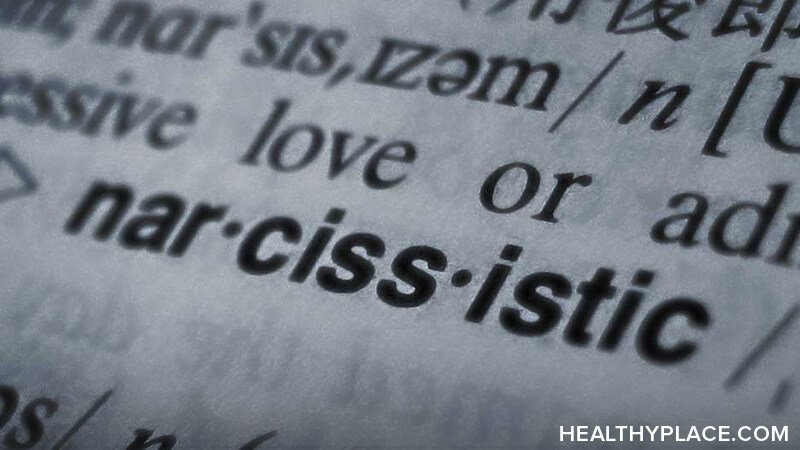Good Mood: The New Psychology of Overcoming Depression Chapter 4
The Mechanisms That Make A Depressive
 Why do some people stay "blue" and "down" for a long time after something bad happens to them, whereas others snap out of it quickly? Why do some people frequently fall into a blue funk whereas others suffer sad moods only infrequently?
Why do some people stay "blue" and "down" for a long time after something bad happens to them, whereas others snap out of it quickly? Why do some people frequently fall into a blue funk whereas others suffer sad moods only infrequently?
Chapter 3 presented the general framework for the understanding of depression. Now this chapter proceeds to discuss why a particular person is more predisposed to depression than are other people who are closer to "normal".
Figure 3 presents an overview of the depression system. It shows the main elements that influence whether a person is sad or happy at a given moment, and whether one does or does not descend into the prolonged gloom of depression. Starting at the left, these numbered elements are as follows: 1) Experiences in childhood, both the general pattern of childhood as well as traumatic experiences, if any. 2) The person's adult history: the recent experiences have the greatest weight. 3) The actual conditions of the individual's present life--relationships with people as well as such objective factors as health, job, finances, and so on. 4) The person's habitual mental states, plus her view of the world and herself. This includes her goals, hopes, values, demands upon herself, and ideas about herself, including whether she is effective or ineffective and important or unimportant. 5) Physical influences such as whether she is tired or rested, and anti-depression drugs she is taking, if any. 6) The machinery of thought which processes the material coming in from the other elements and produces an evaluation of how the person stands with respect to the hypothetical situation taken for comparison. (7) A sense of helplessness.
Figure 3
The main lines of influence from one element-set to another are also shown in Figure 3. The question we ask is: how may a person, alone or with a counselor, alter these elements or their effects to produce fewer negative self-comparisons and a greater sense of competence--hence less sadness--and by that means pull the person out of depression?
Now we proceed in greater detail, considering the elements within these various element-sets and how they influence one another. Those who want still more details on the relationships between these various elements may wish to consult Appendix A, where all these specific ideas are linked graphically.
The Normal Person
A few definitions to start with: A "normal" person is someone who has never suffered from serious depression, and whom we have little reason to think will suffer serious depression in the future. A "depressed" person is someone now suffering from serious depression. A "depressive" is someone who is now depressed or in the past has suffered serious depression, and is subject to depression again unless it is prevented. A depressive who is not now depressed is like an alcoholic who does not now drink, that is, he is a person with a dangerous propensity that requires careful control.
A normal person has "realistic" expectations, goals, values, and beliefs that "normally" keep him feeling good. That is, the normal person's view of the world and himself interacts with his actual state in such a way that the comparisons he makes between actual and hypothetical are usually positive, on balance. Normal people may also have a higher tolerance for negative self- comparisons when they do occur, compared to depressives.
Bad fortune may befall the normal person--perhaps death in the family, injury, marriage breakdown, money problems, loss of job, or a disaster to the community. The person's actual situation then is worse than before, and the comparison between actual and benchmark-hypothetical becomes more negative than before. The unfortunate event must be understood and interpreted in the context of the person's entire life situation. The normal person eventually perceives and interprets the event without distorting it or misinterpreting it to make it seem more terrible or permanent than it really is. And the normal person may suffer less pain and "accept" the event more easily than the depressive.
What then happens? There are several possibilities including: a) Circumstances may change of themselves. Bad health may improve or the individual may purposely alter the circumstances--find a new job, or another spouse or friend. b) The person may "get used to" his health disability or being without the loved one. That is, the person's expectations may change. This affects the hypothetical situation to which he compares his actual situation. And after the expectations of the normal person change in response to the change in circumstances, the hypothetical-comparison state again comes into balance with the actual state in such fashion that the comparison is not negative, and sadness no longer occurs. c) The normal person's goals may change. A basketball player who aimed to make the college team may suffer a spinal injury and be confined to a wheelchair. A "healthy" person's reaction is, after a time, to shift his goal to being a star on the wheelchair basketball team. This restores the balance between the hypothetical state and the actual state, and removes sadness.
David Hume, as great as any philosopher who ever lived, as well as a person of cheerful "normal" temperament, describes how he reacted when his first great book had a very disappointing reception:
I had always entertained a notion that my want of success in publishing the Treatise of Human Nature, had proceeded more from the manner than the matter, and that I had been guilty of a very usual indiscretion, in going to the press too early. I therefore cast the first part of that work anew in the Enquiry concerning Human Understanding, which was published while I was at Turin. But this piece was at first little more successful than the Treatise of Human Nature. On my return from Italy, I had the Mortification to find all England in a ferment, on account of Dr. Middleton's Free Enquiry, while my performance was entirely overlooked and neglected. A new edition, which had been published at London of my Essays, moral and political, met not with a much better reception.
Such is the force of natural temper, that these disappointments made little or no impression on me.(1)
"Normal" people do not, however, respond to misfortune by adapting so readily that their spirits are unaffected. A study that compared paraplegic accident victims to persons who had not suffered paralysis from accident found that the paraplegics remained less happy than the uninjured persons months after the accident2 Normal people may be flexible in adapting their thinking to their circumstances, but they are not perfectly flexible.
The Depressive
The depressive differs from the normal person in having a propensity for prolonged sadness; this is the stripped-down minimum definition of a depressive. This propensity, caused by some mental baggage or biochemical scar carried over from the past, interacts with contemporary events to maintain a state of negative self-comparison.
Much of this Part II is devoted to describing this special mental baggage of the depressive. In preview, here are several important cases:
1) The depressive may, because of her intellectual or emotional training in childhood, misinterpret actual current conditions in a negative direction so that the comparison between actual and hypothetical is perennially negative, or so that after a bit of bad fortune the return to a balanced or positive comparison is much slower than for a person who is not a depressive.
2) The depressive may have a view of the world, herself, and her obligations such that her actual conditions will necessarily always be below the hypothetical. An example is a person whose talents are not extraordinary but who was brought up to believe that her talents are such that she ought to win a Nobel prize. Hence, all her life she will feel a failure, her actual state below the hypothetical, and she will therefore be depressed.
3) The depressive may have a mental quirk which forces all comparisons to be seen as negative even if his actual conditions compare well with his counterfactual condition. For example, he may believe that all people are basically sinful, as Bertrand Russell was afflicted in his youth. Or the perennial negative self-comparison may be caused by biochemical factors to be discussed shortly.
4) The depressive may feel more acute pain from a given negative self-comparison than does the normal person. For example, the depressive might have memories of severe punishment in childhood each time his performance fell below the parental norm. Those memories of the pain from childhood punishment may intensify the pain of negative self-comparisons later on.
5) Still another difference between depressives and non- depressives is that depressives-- almost invariably while they are depressed, and in many cases also when they are not depressed--have a conviction of personal worthlessness and incompetence and lack of self esteem. This sense of worthlessness is general and persistent in depression, compared to the specific and transient sense of worthlessness everyone experiences from time to time. The person who is not depressed says, "I did badly on the job this month." The depressed person says, "I always do badly on jobs," and he thinks that he will continue to do badly in the future. The depressed person's "I'm no good" judgment seems permanent and refers to all of him, whereas the "I did badly" of the nondepressed person is temporary and refers to one part of him alone. This is an example of over generalizing, which is typical of many depressives and a source of much pain and sadness.
Perhaps depressives tend to over generalize as a general habit, and to be more absolutistic in their judgments than do normal people in most of their thinking. Or perhaps depressives confine these damaging habits of thought to self-evaluative areas of their life, which cause depression. Whichever is the case, these habitual modes of inflexible thinking can cause prolonged sadness and depression.(3)
Habitual Negative Self-Comparisons Produce A Sense of Worthlessness
A single negative self-comparison does not imply a general sense of worthlessness and lack of self-esteem. A single negative self-comparison is like a single frame of a movie that is in your consciousness at a single moment, whereas a lack of self-esteem is like an entire movie full of negative self- comparisons. In addition to the specific negative self- comparison impressions you receive from each of the movie's frames, you also take away a general impression from the movie as a whole--personal worthlessness. And when later reflecting on the movie, you may at a given moment remember either a single frame or your general impression of the movie as a whole, and both the specific and the general views give you the impression of worthlessness.
A depressive reviews so many thoughts of individual negative self-comparisons that she develops the general impression of lack of personal value--worthlessness--which reinforces the individual negative self-comparisons. The never-ending flow of neg-comps also contributes to the sense that the person is helpless to stop the flow, and causes the person to lose hope that the painful neg-comps will ever cease. The general impression of worthlessness then combines with a sense of helplessness to cause sadness. The relationship between negative self-comparisons, lack of self esteem, and sadness may be diagrammed as in Figure 4.
Self-Evaluation and Your "Life Report"
Put the above discussion another way: At any given moment you have in your mind something like a school report card -- call it your `Life Report' -- with grades on it for a variety of "subjects." You write the grades for yourself, though taking into account how other people judge you, of course, to a greater or lesser degree. The "subjects" include both life conditions, such as the condition of your love life or marriage, and activities, such as your professional achievements and your behavior toward your granduncle.
Another category of `subjects' on the Life Report are future occurrences that matter to you and which are related to your `success' or `failure'-- on the job, in your relationships with others, even religious experiences. These are marked "High hope" or "Low hope".
The "subjects" are marked "important" (e.g. professional achievement) or "unimportant" (e.g. behavior toward granduncle). Again, other people's judgments influence you, but probably less so than in their judgments about how you are doing in specific activities.
The over-all state of your Life Report - the larger proportion of those "important" matters that are of your own doing are marked positive or negative--constitutes your self- esteem or "self image." If there are many important matters marked "bad," the composite constitutes low self-esteem and a poor self-image of yourself.
Then along comes some unpleasant event, minor or major, that leads to a negative self-comparison between, on the one hand, what you think about yourself in light of the event, and on the other hand, the standard which you take as your benchmark for comparison. The consequent sadness will be only temporary when the event is not seen as all-important or is surrounded by a lot of other negative indications: the effects of the death of a loved one upon a person with generally high self-esteem is such an example. But if your Life Report is predominantly negative in the categories marked "important," then any negative event will be reinforced by the overall sense of worthlessness, and will in turn contribute to your feeling worthless. This gives extra strength to each particular negative self-comparison. And when (or if) the thought of that particular negative self-comparison leaves you, the generalized negative self-comparison of being worthless keeps you feeling sad. When that state continues for a time, we call it depression.
When talking of his own depressed thoughts, Tolstoy put the matter this way: "[Like drops of ink always falling on one place they ran together into one big blot." (4)
How does one happen to have a negative Life Report? These are possible contributing factors, a) one's childhood training and upbringing, b) one's present life situation, including the recent past and the expected future, and c) an innate predisposition to react fearfully or otherwise negatively toward events. The last of these possibilities is pure speculation; no evidence has yet been shown for its existence.
The role of the present is straightforward: It provides evidence that you interpret about how well you are doing with various matters, and how well you can hope to do in the future.
The past has a multiple role: It provided--and still provides--evidence about how well you usually do on some matters.(5) But it also taught you methods --sound or unsound--to interpret and evaluate the evidence that the world provides to you about your activities and life condition. And, perhaps most important, your childhood training influences which categories you mark as "important" and "unimportant." For example, one person may consider relationship with one's family or work success as very important, whereas another person may consider neither important because of (or in reaction to) childhood experience.
Those are some of the ways in which a depressive may differ from a normal person, differences that may cause the depressive to suffer prolonged sadness in the face of a set of external conditions whereas they cause only fleeting sadness to the normal person.
Many of the above tendencies can be summarized as a propensity for seeing a half-empty glass instead of a half-full glass. This propensity is neatly demonstrated by an experiment that showed people two images at the same time -- a positive and a negative, one in each eye--with a special viewing device. Depressed persons "saw" the unhappy image and did not "see" the happy image more frequently than persons who were not depressed (6). And other research shows that even after a siege of depression is over, the former sufferers have more negative thoughts and biases than do normal persons.
There are many possible reasons why depressives differ from other persons. For example, depressives may have experienced especially strong pressure from parents to set and achieve high goals, and in response have come to rigidly believe that those goals must be sought . They may have suffered traumatic loss of parents or others as children. They may have genetically-caused biological makeup's, such as a low energy level, that may easily make them feel helpless. And there are many other possible causes. But we need not further consider the matter because it is the current thinking and behavior patterns that must be changed.
Biology and Depression
Earlier, it was mentioned that biological factors--genetic origins, physical constitution, state of your health --may influence your propensity for depression. A word about them seems appropriate here.
Biological factors can apparently operate directly upon the emotions of sadness-happiness, and/or upon the comparison mechanism to make a comparison seem more negative or positive than it otherwise would be perceived. This is consistent with such observed facts as that:
1) Being sad often comes with being tired. Being tired also makes depressives judge that endeavors will fail, that they are helpless as well as worthless, and so on. This makes sense because when one is tired it is objectively true that one is less competent to control the circumstances of one's life than when one is fresh. And the tiredness also typically makes depressives project into the future that they will not be successful. Hence the bodily state of being tired affects the person's self- comparisons and hence her sadness-happiness state.
2) Postpartum depression follows a whole series of biological changes, and seems to have no psychological explanation.
3) Mononucleosis and infectious hepatitis tend to cause depression. (7)
4) Some geneticists have concluded that there is "strong evidence in favor of considering manic-depressive psychosis to be genetically influenced in good part, [but] we are unable to come to any conclusions regarding its mode of inheritance."(8) And for a while it was believed that the causal gene had been identified, but later reports have cast doubt on this conclusion (Washington Post, November 28, 1989, p. Health 7). And some researchers believe that there is evidence for a "biochemical scar" which remains from past depression and which continues to influence feelings in the present; a deficiency of the chemical norepinephrine is commonly implicated by the biochemists. (This need not contradict the observation mentioned earlier that survivors of catastrophes such as concentration-camp experience do not suffer unusual amounts of depression.
There is clear biological evidence that depressed people have differences in body chemistry from non-depressed people.10 There also is a direct biological connection between negative self-comparisons and physically-induced pain. Psychological trauma such as a loss of a loved one induces some of the same bodily changes as does the pain from a migraine headache, say. When people refer to the death of a loved one as "painful", they are speaking about a biological reality and not just a metaphor. And it is reasonable that more ordinary "losses" -- of status, income, career, and of a mother's attention or smile in the case of a child -- have the same sorts of effects even if milder.
The Appendix to this chapter discusses the role of drugs in treating depression.
From Understanding To Cure
Ultimately we are interested in the mechanism of depression so that we can manipulate it to treat depression. Let's say that you have a Life Report which is predominantly negative, and it causes you to be sad and depressed. As noted in many places in this book, there are several ways to get rid of your sadness at any given moment. These include putting the Life Report out of your mind by pushing it out; changing some of the negative categories from important to unimportant; changing the standards by which you grade yourself on particularly important negative matters; learning how to interpret the external evidence more accurately, if you now do not interpret the evidence well; and involving yourself in work or creative activity that pulls your mind away from the Life Report.
The advantages and disadvantages of these and other methods of preventing depression depend upon your own psychology and your life situation. The pros and cons of each are discussed later in this book.
Summary
This chapter discusses why a particular person is more predisposed to depression than are other people who are closer to "normal".
The main elements that influence whether a person is sad or happy at a given moment, and whether one does or does not descend into the prolonged gloom of depression are as follows: 1) Experiences in childhood, both the general pattern of childhood as well as traumatic experiences, if any. 2) The person's adult history: the recent experiences have the greatest weight. 3) The actual conditions of the individual's present life-- relationships with people as well as such objective factors as health, job, finances, and so on. 4) The person's habitual mental states, plus her view of the world and herself. This includes her goals, hopes, values, demands upon herself, and ideas about herself, including whether she is effective or ineffective and important or unimportant. 5) Physical influences such as whether she is tired or rested, and anti- depression drugs she is taking, if any. 6) The machinery of thought which processes the material coming in from the other elements and produces an evaluation of how the person stands with respect to the hypothetical situation taken for comparison. (7) A sense of helplessness.
The depressive differs from the normal person in having a propensity for prolonged sadness; this is the stripped-down minimum definition of a depressive.
There are many possible reasons why depressives differ from other persons. For example, depressives may have experienced especially strong pressure from parents to set and achieve high goals, and in response have come to rigidly believe that those goals must be sought . They may have suffered traumatic loss of parents or others as children. They may have genetically-caused biological makeup's, such as a low energy level, that may easily make them feel helpless. And there are many other possible causes. But we need not further consider the matter because it is the current thinking and behavior patterns that must be changed.
Appendix: On Drug Therapy For Depression
Why not simply prescribe anti-depression drugs--several of which are in the armamentarium of physicians--for all cases of depression? The fact that bodily states may be related to depression suggests the use of drugs to artificially remove neurochemical imbalances, that is, to alter bodily states in such manner as to relieve depression. Indeed, Kline suggested that "physical repair through drug therapy is probably useful even in cases in which the original problem was primarily psychological." (9)
The word "repair" seems overly strong. The most important reason not to rely on drug therapy is that, in the words of one psychiatrist, "The drugs do not cure the illnesses; they control them."(11) As noted earlier, one long-term follow-up study shows that patients treated with cognitive-behavioral therapy in addition to drugs have few recurrences than do patients treated with drugs alone. (11.1 Miller, Norman, and Keitner, 1989)
There are also several other persuasive reasons why one should continue to seek psychological understanding of depression, and psychological methods for its treatment:
- It is not clear in most cases whether depressed thinking caused the chemical imbalances, or the chemistry caused the depression. If the former is true, though drugs may help temporarily, is reasonable to expect a recurrence of the depression when drugs are stopped. If so, it seems more reasonable to attack the depression by working on the bad thinking as the first method, rather than by starting with drugs.
- Physical treatment can have side-effects years after their use, as too many tragic examples such as improperly- prescribed birth-control pills and x-ray radiation have shown too well. Since there is an inherent unknown danger in the use of drugs, non-drug treatment that promises equal success must be preferable.
- There are some immediate physically dangerous side- effects from the common anti-depressant drugs.(12)
- There may be immediate mental side-effects destructive to creativeness and other thinking faculties, though there is little discussion of such side effects by such psychiatric drug enthusiasts. A reasonable conclusion drawn from the studies that have been made on this issue suggest that anti-depressant drugs reduce the creativity of some writers (and presumably, other artists) while increasing the creativity of others by enabling them to work. The crucial dosage is "delicate" and "complex", according to physicians who have studied the matter.(13)
- Drugs do not work in some cases.
- For at least some people the process of conquering depression without drugs can lead to valued states of ecstasy, self-knowledge, religious experience, and so on: Bertrand Russell is one such example:
The greatest happiness comes with the most complete possession of one's faculties. It is in the moments when the mind is most active and the fewest things are forgotten that the most intense joys are experienced. This indeed is one of the best touchstones of happiness. The happiness that requires intoxication of no matter what sort is a spurious and unsatisfying kind. The happiness that is genuinely satisfying is accompanied by the fullest exercise of our faculties, and the fullest realization of the world in which we live.(14) - There can be damaging psychological side-effects of drug treatment. According to a physician, the anti-depressant drug may become "a nagging reminder that something within is not working as it should...[and] has the potential for decreasing one's sense of self-worth"(15)...."It is not uncommon for patients to go off the medications a number of times, testing their limitations. This often (but not always) results in further episodes....This returns the patient to square one and further disturbs his sense of self-worth".(16)
"Some patients are very upset by the idea that it is not their own will but a medication that is responsible for preserving control over their behavior, mood, or judgment...as a weakness. These feelings can lead to a rather negative attitude...."15 -
Understanding depression as part of human psychology is of interest for its own sake. Hence the existence of effective anti-depression drugs is not a good reason to cease searching for psychological understanding of depression.
There are a variety of anti-depressant drugs and a variety of side-effects. A convenient up-to-date summary of them is in Chapter 5 of the book by Papalos and Papalos referred to in the bibliography..
Present Conditions (Conditions (Interpretation of these) Childhood Recent history (General or (History weighted Traumatic) by recency) Anti-Depression Drugs or (Comparison) - Habitual States Goals Self demands hopes FIGURE 4-1 3 Low self-esteem Negative self-comparisons Sadness Sense of helplessness Figure - 5
next: Good Mood: The New Psychology of Overcoming Depression Chapter 5
~ back to Good Mood homepage
~ depression library articles
~ all articles on depression
APA Reference
Staff, H.
(2008, November 2). Good Mood: The New Psychology of Overcoming Depression Chapter 4, HealthyPlace. Retrieved
on 2026, January 12 from https://www.healthyplace.com/depression/articles/good-mood-the-new-psychology-of-overcoming-depression-chapter-4




 What is Narcissism?
What is Narcissism? The onset of narcissism is in infancy, childhood and early adolescence. It is commonly attributed to childhood abuse and trauma inflicted by parents, authority figures, or even peers.
The onset of narcissism is in infancy, childhood and early adolescence. It is commonly attributed to childhood abuse and trauma inflicted by parents, authority figures, or even peers.